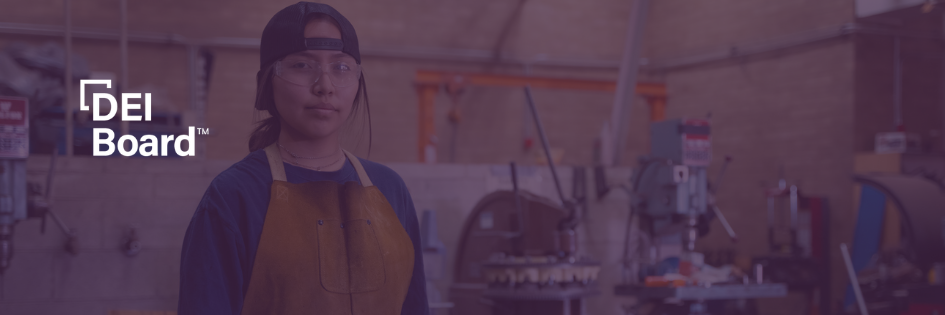Key takeaways:
- Senior diversity, equity, and inclusion leaders shared the unique challenges they face in talent attraction for Indigenous candidates, including cultural differences, ineffective internship programs, and creating full-time employment opportunities.
- Creating an effective relationship with Indigenous communities is critical in improving communications and overall efforts for attracting Indigenous talent. Cultural competency training and partnerships with Indigenous organizations can improve the efforts in your company.
- Equipping recruiters and hiring managers with the right resources can increase your organization’s Indigenous talent pool. Investing in inclusive onboarding and mentorship programs can also be helpful in retaining Indigenous talent and creating career development opportunities.
Diversity, equity, and inclusion leaders are looking to boost efforts in talent attraction for Indigenous peoples in their workplaces.
In a private leadership discussion hosted by the DEI Board, members gave insights on the unique challenges around Indigenous talent attraction. They discussed how they’re building effective partnerships with Indigenous communities to diversify their overall talent pools.
We got an inside look at how you can build talent attraction strategies to support Indigenous peoples and the recommendations DEI leaders suggest to improve diverse workplaces at large organizations.
Identify the Unique Challenges Around Indigenous Talent Attraction
DEI Board members shared how internship and apprenticeship programs that focus on Indigenous communities often struggle because of misalignment of expectations for individuals in these programs.
It was also noted how these programs are struggling to create full-time employment for Indigenous people, something that former Deloitte Chief Diversity Officer Jane Allen discussed in a report on increasing opportunities for Aboriginal communities.
“If they land jobs in large urban centers, Aboriginal people may experience isolation,” Jane said in the report. “New cultural norms, unfamiliarity with urban environments, the lack of role models in more senior jobs — or even the absence of a single familiar face in the organization — can contribute to retention problems.”
In the private leadership discussion, DEI Board members said one unique challenge in attracting Indigenous talent has been the lack of reliable internet, requiring companies to approach these candidates with non-traditional approaches.
In a McLean & Company blog post, it was noted there are also cultural differences that companies must navigate when reaching out to Indigenous candidates. For example, many Indigenous people prefer to speak about team achievements rather than focus on individual efforts during the interview process and rely on spoken communications rather than written.
“New cultural norms, unfamiliarity with urban environments, the lack of role models in more senior jobs — or even the absence of a single familiar face in the organization — can contribute to retention problems.”
former Deloitte Chief Diversity Officer Jane Allen
Cultivate Effective Relationships with Indigenous Communities
DEI Board members agree that building relationships in communities is absolutely essential for effective partnerships.
To do so, one member recommended the Progressive Aboriginal Relations certification program for its pillars around employment, business development, community relations, and action. Another member shared working directly with the Indigenous communities can help build a more inclusive workforce plan.
A LinkedIn article stated how you can improve relationships with Indigenous people through cultural competency training for recruiters and hiring managers.
DEI Board Member Bell, the largest telecommunications company in Canada, reported how they’re furthering their relationships with the Indigenous communities in a 2021 DEI report.
Bell, whose membership is led by Director of Diversity, Equity, Inclusion, Mental Health, and Well-being Monika Mielnik, reported how they’re focusing on creating equitable access to career development opportunities for all First Nations, Inuit, and Métis candidates.
They also shared how they honor Canada’s Indigenous peoples by acknowledging their connection to the land where their workplaces are located.
Lauren Carlisle, Senior Director of Human Resources at Hallmark Canada, explained how they’re creating relationships with Indigenous communities by focusing on representation in their workforce in a Benefits Canada article. She also shared how they’re encouraging other communities to shop at Indigenous-owned businesses.
“Being a retailer, we’re also sharing where and how we can make a difference through #buyindigenous,” Lauren said. “On an individual level, we can affect positive change by supporting products and services of Indigenous businesses, organizations, and friends.”
DEI Board members explained that ultimately, the more you collaborate and communicate with Indigenous communities, the stronger and more productive partnerships you will build.
“On an individual level, we can affect positive change by supporting products and services of Indigenous businesses, organizations, and friends.”
Lauren Carlisle, Senior Director of Human Resources at Hallmark Canada
Recommended Partnerships to Help Increase Your Indigenous Peoples Talent Pool
In the DEI Board, members shared some of the organizations they’re partnering with to diversify their talent pools, including Indigenous Works, Pride at Work Canada, The National Association of Friendship Centres, Vecova, Employ Abilities, Women Building Futures, and more.
Members also discussed how collaborating with your talent acquisition team to talk to leaders about how they might diversify and introduce systems to eliminate bias can improve strategies. Gaining feedback from those within the community through employee resource group events and engagement surveys can also help improve retention.
All members of the DEI Board are heads of diversity, equity, and inclusion at billion-dollar brands and meet every week to benchmark their toughest questions. If you lead DEI at a large organization, you can apply to learn more about how membership offers unbiased peer insights on talent attraction strategies for Indigenous communities and how you can diversify your talent pool.


